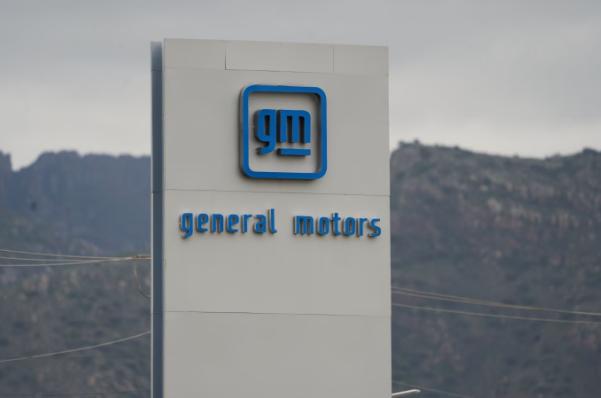
By 2025, the global automotive industry is poised for a new wave of collaboration. General Motors and Hyundai have announced they will jointly develop five new models for the Americas, including four for Central and South America and an electric van for North America. This collaboration not only marks the deep integration of technology, manufacturing, and marketing between the two giants, but also reflects the survival logic and strategic game of the automotive industry as it transitions to electrification and intelligent technology.
According to the two parties' plan, four customized models will be introduced to the Central and South American markets: a compact SUV, a sedan, a pickup truck, and a mid-size pickup truck. These models precisely address diverse consumer scenarios, catering to both urban commuting and off-roading needs. This is particularly noteworthy given Hyundai's relatively limited experience in the pickup truck sector, while GM's Chevrolet and GM brands have long-standing roots in the market. This collaboration may result in the exchange of brand logos, such as the Hyundai "H" logo being applied to models like the Colorado and Silverado, filling gaps in Hyundai's product lineup through technology sharing. The North American market is focused on electric commercial vans, targeting the green transformation needs of the logistics industry. Production is scheduled to begin in 2028, with range and cargo capacity benchmarked against industry benchmarks, in line with the zero-emission goals of companies like DHL.
The automotive industry's wave of alliances is essentially a survival strategy to cope with high technological investment and market uncertainty. Hyundai and GM have rarely collaborated in the past. Behind this alliance, GM aims to leverage Hyundai's expertise in electrification and hydrogen technology to reduce its reliance on South Korean battery companies. Hyundai aims to leverage GM's established North American production facilities (such as the renovated CAMI plant) and supply chain network to reduce operating costs in the Chinese and US markets. The two parties have a clear division of labor: GM will lead the development of medium-duty truck platforms, while Hyundai will be responsible for compact models and electric trucks. Through joint procurement of battery raw materials and optimized logistics systems, R&D costs are expected to be reduced by over 20%.
In the Tesla-dominated North American market, the GM-Hyundai alliance offers both defensive and offensive capabilities. On the one hand, traditional automakers need to catch up to the "Silicon Valley speed" of the software-defined car era. GM's recent efforts to establish an independent software division have been slow, while Hyundai's R&D center in Silicon Valley is also facing bottlenecks. The collaboration may accelerate the collaborative development of operating systems and autonomous driving technologies between the two companies, addressing software shortcomings. Meanwhile, the revitalization of the Chinese market has become a core objective. Hyundai's sales in China have plummeted 40% from 250,000 vehicles in 2023, and GM is also facing a decline in market share. By sharing supply chains (such as hydrogen fuel cell technology) and localizing production, both companies aim to rebuild their competitiveness in China and compete with emerging local players such as BYD and NIO.
History warns of the risks of collaboration: DaimlerChrysler's "merger of the century" failed, and the Renault-Nissan Alliance also fell into internal friction due to equity disputes. While the Hyundai-GM partnership is based on "complementarity," cultural integration and the distribution of technological sovereignty remain potential risks. Furthermore, potential regulatory changes under the Trump administration (such as tightening electric vehicle subsidies) could exacerbate market volatility. However, given the scale of their economies of scale, the two companies' combined annual sales exceed 13 million vehicles, surpassing Toyota. If 800,000 new vehicles are successfully mass-produced, it will reshape the automotive landscape in the Americas.
The mass production plan for electric vans aligns with global carbon neutrality goals. GM's $800 million investment in converting its CAMI plant to all-electric production, combined with Hyundai's hydrogen technology, signals a collaboration that extends beyond pure electric vehicles to encompass diverse energy solutions. This approach aligns with industry trends: Strati data shows that gas-powered hybrid vehicles are gaining market share at a 19% rate, while declining battery costs provide cost control for the joint venture's models.
GM CEO Mary Barra's emphasis on "delivering competitive products faster and more efficiently" and Hyundai CEO Chung Eui-sun's emphasis on "cost efficiency and customer value" together outline the core vision of the partnership. At the crossroads of the automotive industry's transition from mechanical to intelligent, and from isolated competition to alliances, this cross-Korean and US-China collaboration has the potential to redefine the global automotive competitive landscape for the next decade.

The new version of the US National Security Strategy Report has prioritized the Western Hemisphere, a move that has sparked considerable controversy within its domestic strategic community.
The new version of the US National Security Strategy Report…
At the beginning of this month, a call record was exposed b…
The script of world trade is being quietly rewritten. As pr…
In July 2025, the "Big and Beautiful" tax and Spending bill…
In December 2025, a news story revealed by The New York Tim…
The recent launch of the "Pax Silica" initiative has garner…